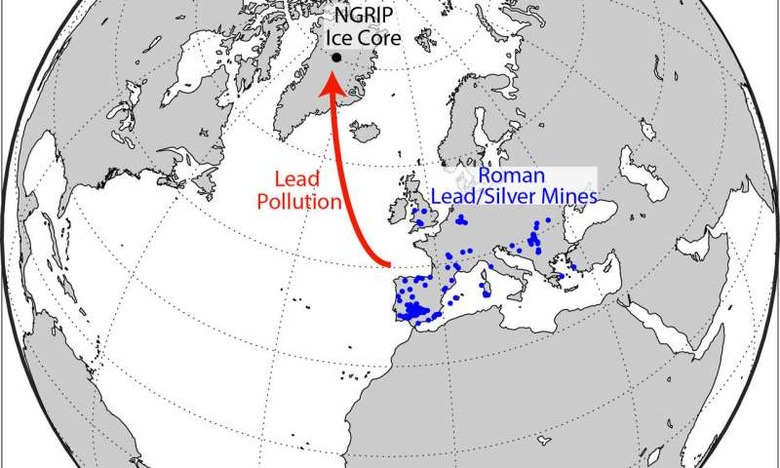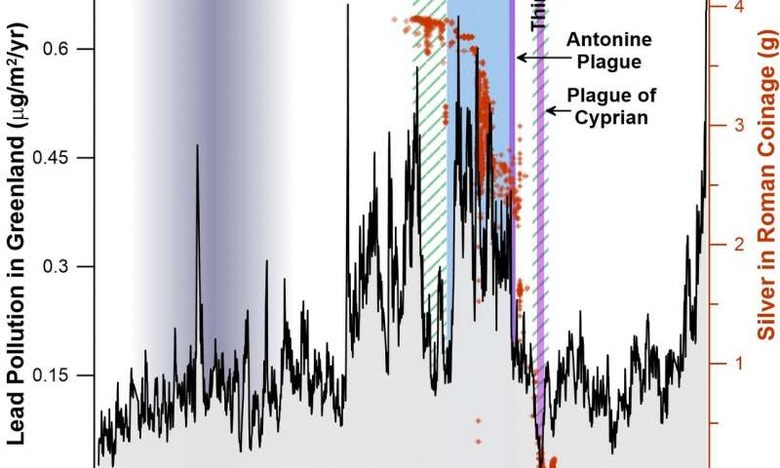Lead In Ice Shows Rise And Fall Of Roman Empire
Lead pollution in Greenland was part of a study published this week which showed connections to major events in ancient times. Researchers recorded amounts of lead in layers of ice frozen for thousands of years. "We found that lead pollution in Greenland very closely tracked known plagues, wars, social unrest and imperial expansions during European antiquity."
Lead author for this study was Joe McConnell, Ph.D., Research Professor of Hydrology at DRI. "Our record of sub-annually resolved, accurately dated measurements in the ice core starts in 1100 BC during the late Iron Age and extends through antiquity and late antiquity to the early Middle Ages in Europe—a period that included the rise and fall of the Greek and Roman civilizations," said McConnell.

This isn't the only study of its type, but it is the most intensive ever done on ice in Greenland. In this study, more than 21,000 chemical measurements were recorded. "We believe this is the first time such detailed modeling has been used to interpret an ice-core record of human-made pollution and identify the most likely source region of the pollution," said coauthor Andreas Stohl, Ph.D., Senior Scientist at NILU.
The most major source for lead emissions in these ancient times was the production of silver. Silver was used as a key component of currency. "Because most of the emissions during these periods resulted from mining and smelting of lead-silver ores, lead emissions can be seen as a proxy or indicator of overall economic activity,"

ABOVE: Dr. Monica Arienzo with ice core sample at Denver Research Institute in Reno, Nevada. Photo by DRI.
Emissions can be seen tied to wars and political instability, largely during the Roman Republic. Emissions reached "a sustained maximum during the Roman Empire before plunging in the second century coincident with the Antonine plague, and remaining low for >500 years." Emissions matched imperial expansion and major plagues, as well.

According to Phys dot org, the research team consisted of "an unusual combination of expertise." That included atmospheric scientists, economic historians, ice-core specialists, and archaeologists. "Working with such a diverse team was a unique experience in my career as a scientist," said McConnell. "I think that our results show that there can be great value in collaborating across disciplines."
You can learn more about this subject in the paper "Lead pollution recorded in Greenland ice indicates European emissions tracked plagues, wars, and imperial expansion during antiquity" as published with PNAS. This study was authored by Joseph R. McConnell, Andrew I. Wilson, Andreas Stohl, Monica M. Arienzo, Nathan J. Chellman, Sabine Eckhardt, Elisabeth M. Thompson, A. Mark Pollard, and Jørgen Peder Steffensen, and can be found with code doi.org/10.1073/pnas.1721818115.
